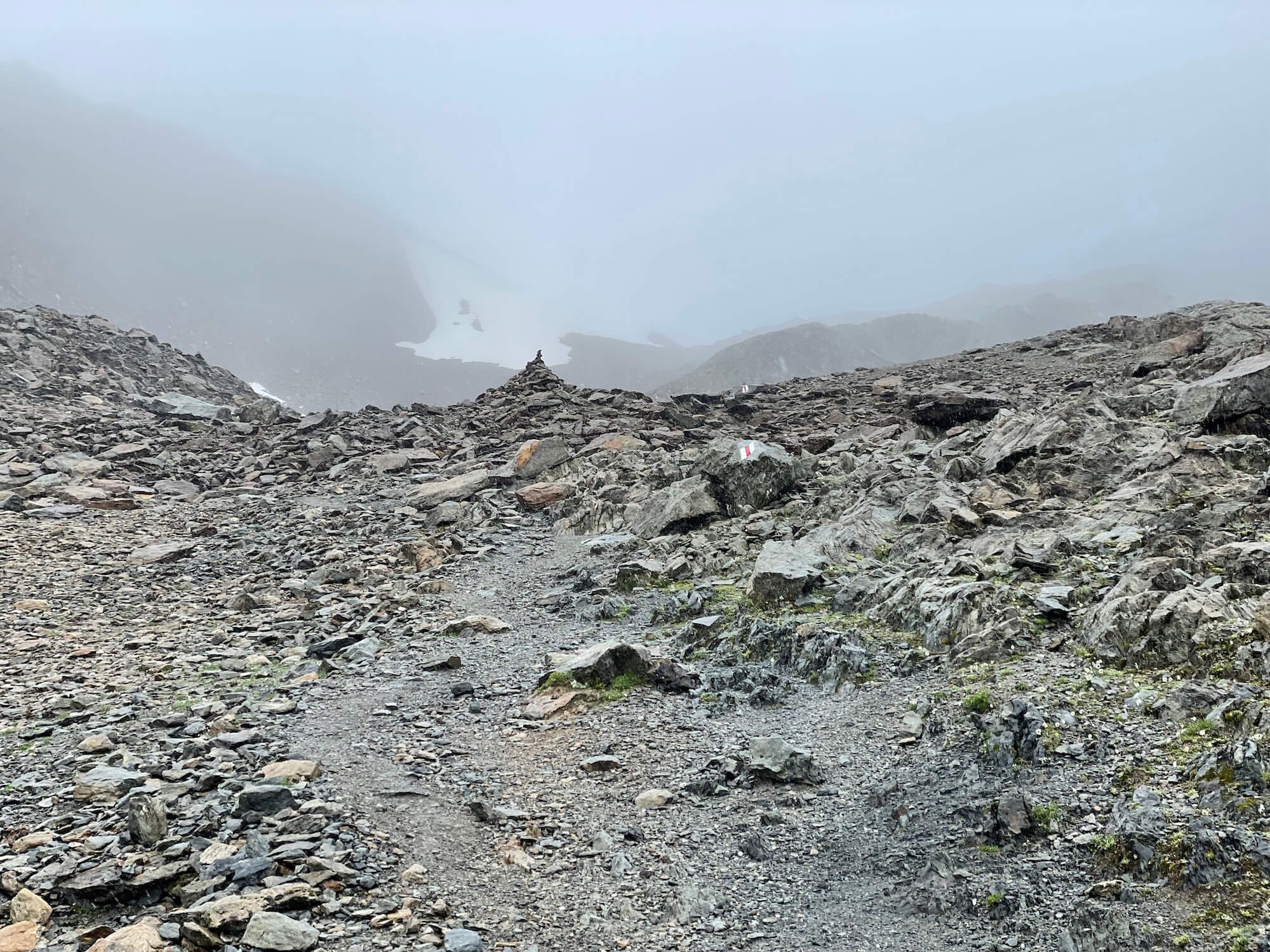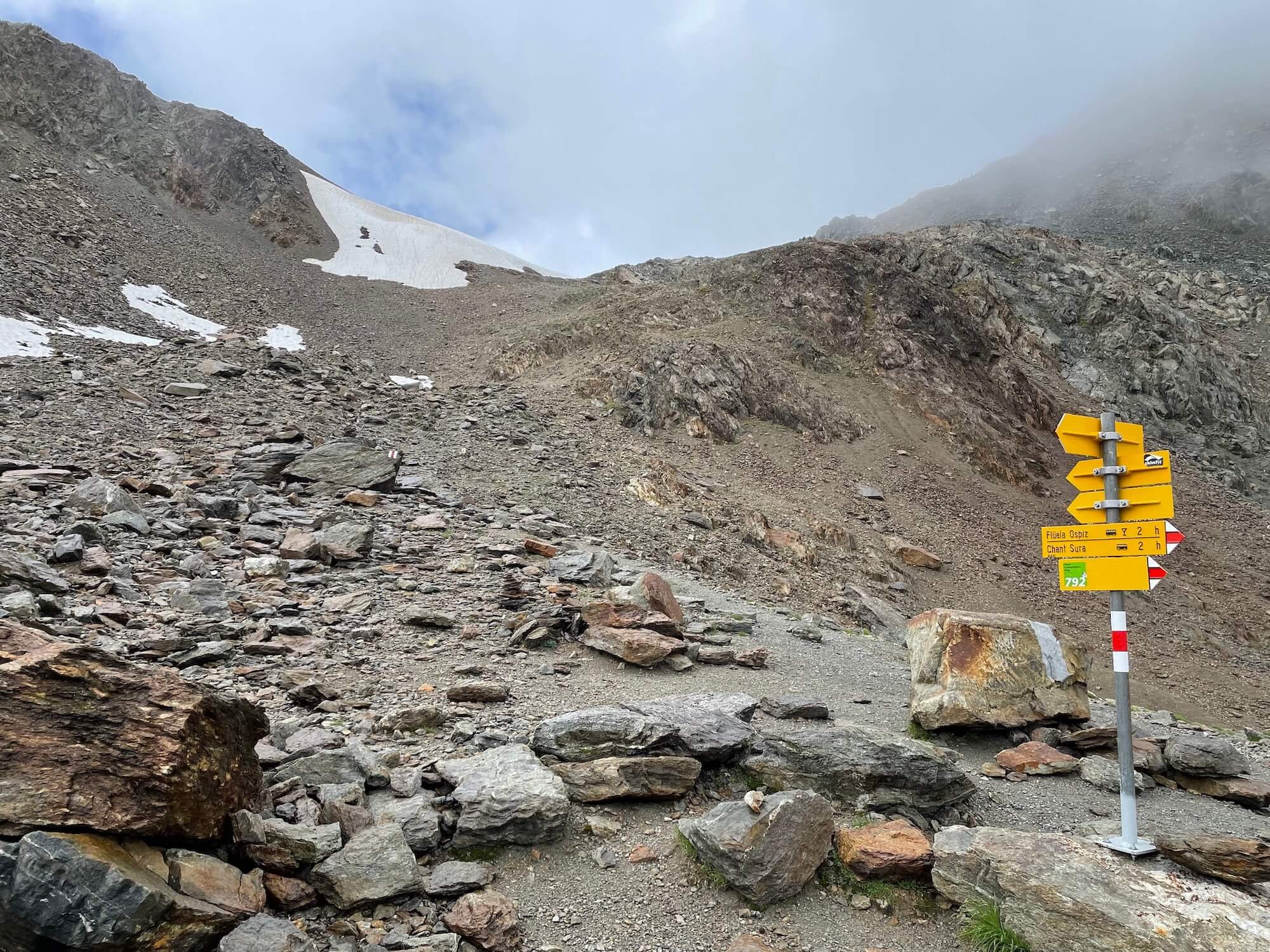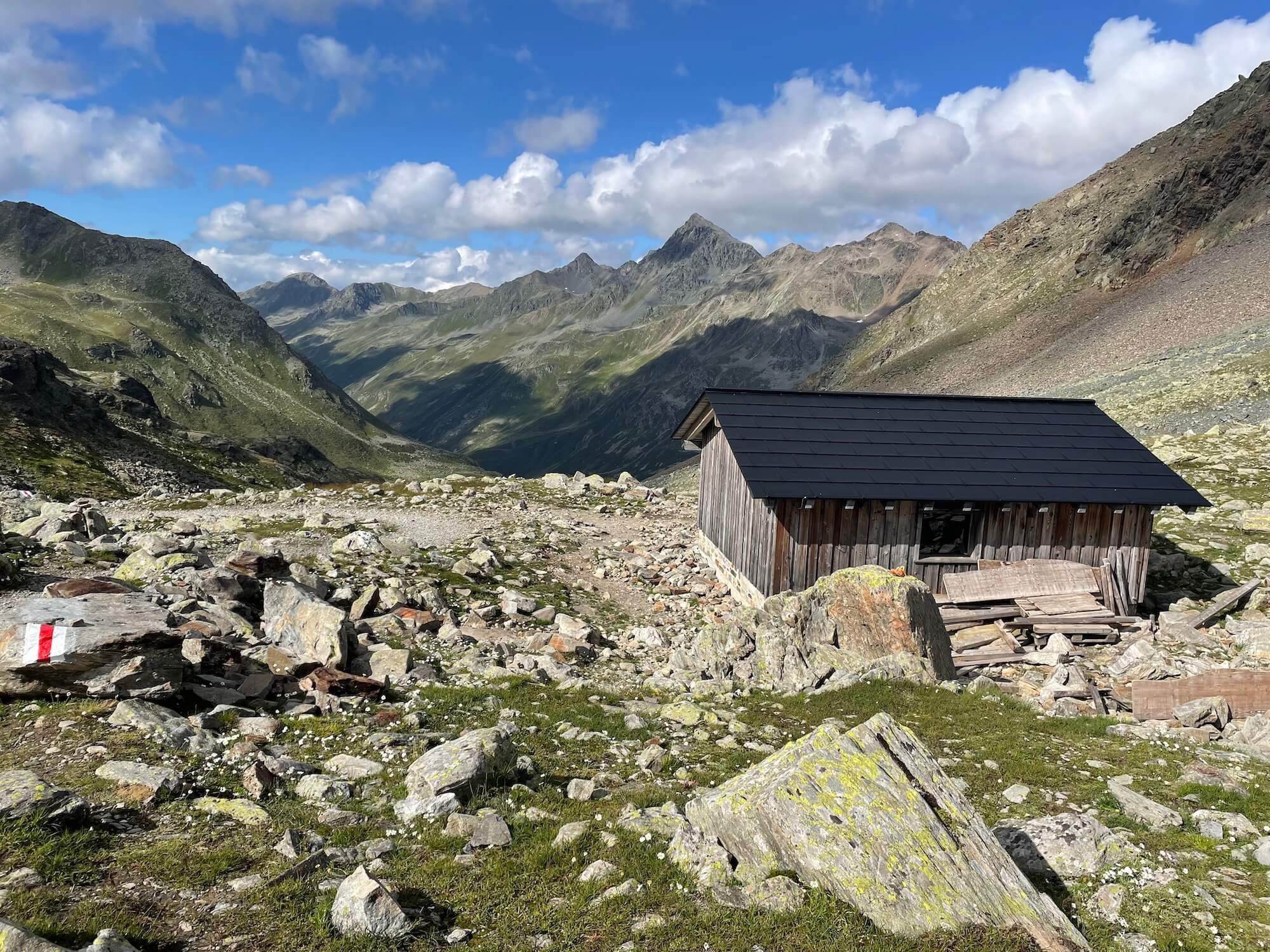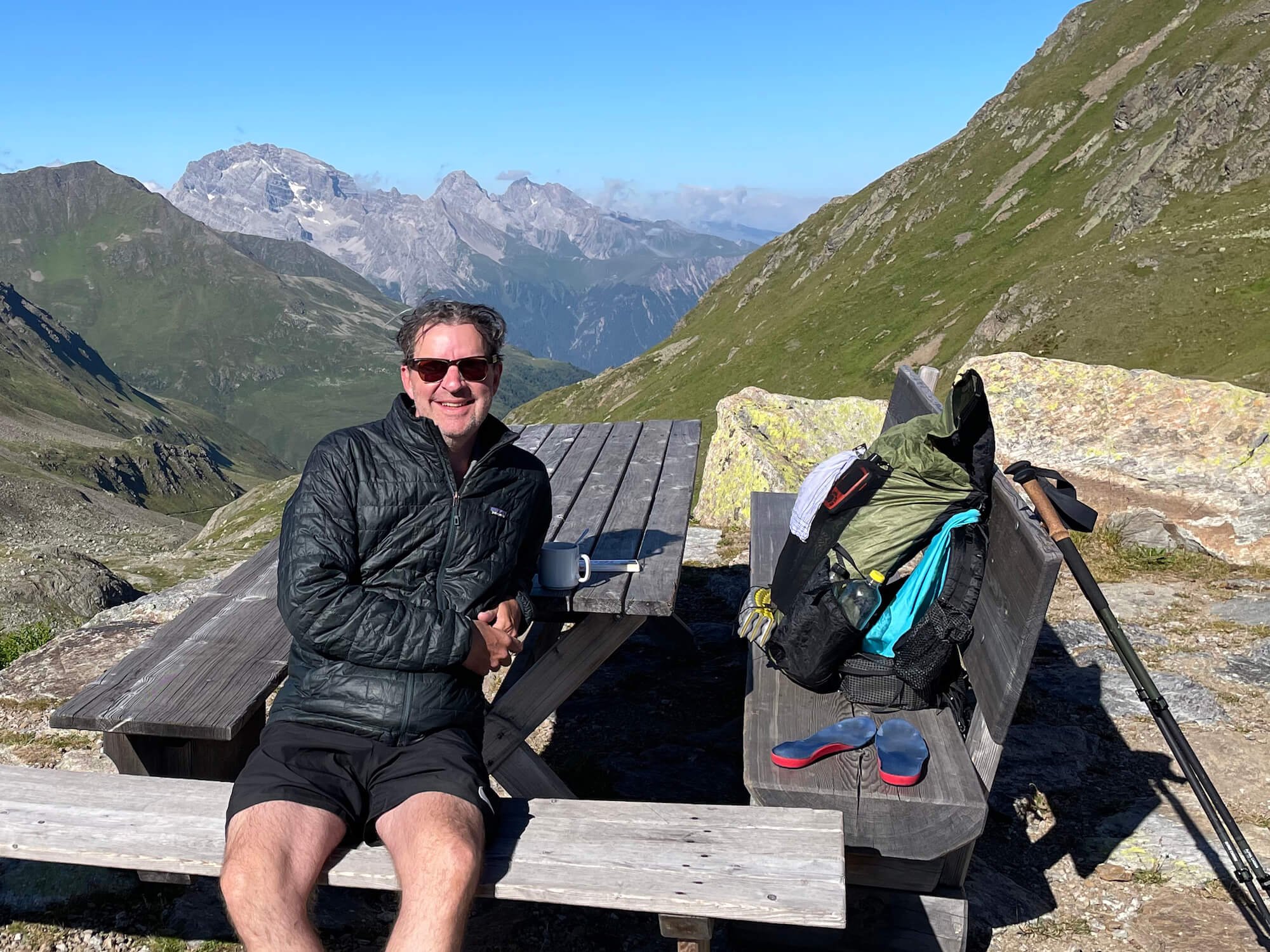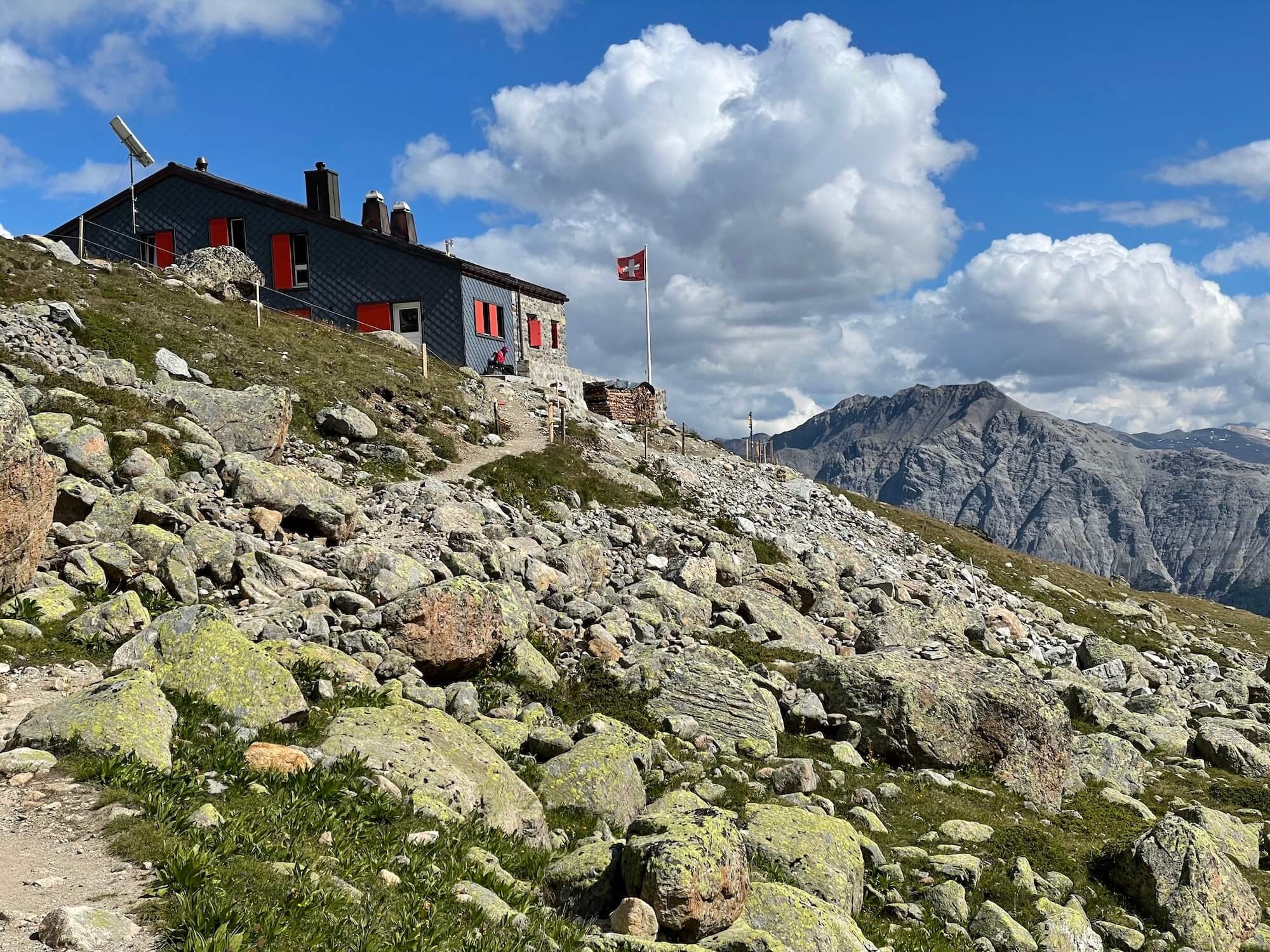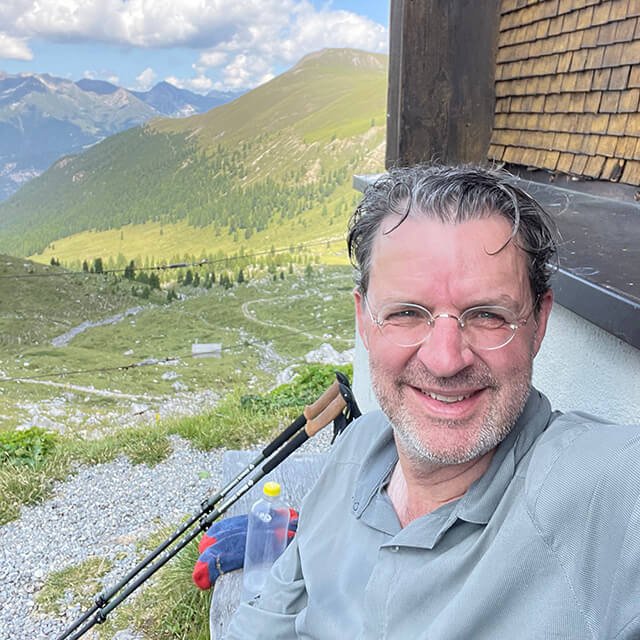Pieter Boddaert from the Netherlands confronts his expectations and disappointment while hiking along the Kesch Trek, a 36.1 mile / 58 km point-to-point trail located near Davos, Graubünden, Switzerland.
Last summer I did a twelve day thru hike in the Swiss Alps. The backbone of this hike was the Kesch Trek, a classic four day hike that runs in the canton of Graubünden. It starts at the Flüela Pass and ends in the charming village of Bergün.
I visited Bergün as a young boy during a family holiday. When my father invited me to hike to the Kesch Hütte together with my brother, I declined. I preferred to spend my day reading comics at the Bergün swimming pool. When I grew up and became an avid hiker, I always regretted that decision.
Now that I finally hiked the Kesch Trek, I met quite a few challenges. The first mountain hut on the trail, the Grialetsch Hütte, was closed for the season, which forced me to hike the trail in three instead of four days. Moreover, right at the start I discovered my water filter failed (which meant limited water), and I wounded my right foot in a clumsy way. However, my greatest challenge was how to deal with the bad weather.
Kesch Trek: Flüela Hospiz with the Schwarzhorn. Photo: Pieter Boddaert
I woke up at the Flüela Hospiz in a dense fog that blocked all views of the mountains. Especially the Flüela Schwarzhorn, which I planned to summit that day, was entirely invisible. It was still misty when I left the Hospiz for the trailhead on the other side of the pass. Ascending into the mountains towards the Schwarzhorn, herds of curious sheep on the trail seemed to be questioning me with their tilted heads: what are you supposed to do here? A good question indeed, because most of the time I could not see more than fifty meters in front of me. And when the mist cleared, snow and hail started to fall from the dark sky. I began to doubt my plan to climb the Schwarzhorn summit.
From the trail crossing to the Schwarzhorn, the summit would take about two hours up and down. The mountain was enclosed in a thick fog, its summit invisible. I sat down on a slab of rock, disappointed by the fog obstructing all views, just like the day before. Would it be worth the effort, knowing that I wouldn’t see a thing up there? Why waste two hours of hiking in the mist, I wondered. What finally made me push on, was the idea that reaching a 3,000 meter summit would be a personal record.
But it was hard. I followed a steep and rough trail up to the snowfields and further along a narrow ridge. I walked deeper and deeper into the mist until I really couldn’t see more than two meters in front of me. The sharp rocks to my left and right acted as a fence between me and an unfathomable depth. Then, after an hour of climbing, a pale wooden cross loomed in front of me: I had reached the summit.
Now I was completely contained by the white fog. I would not have been able to tell whether I were on a summit or in a deep cave, if not for the cross with “3147 m” carved in the wood. It was cold, wet and I felt disappointed. I had hoped that the sky would clear, and that I would be granted an epic view from the summit.
I sat down, thinking about my situation. About the clouds, the mountains and the rain. I began to realize that all were part of a greater natural system. The water that I love so much when it streams in a wild mountain brook; the water I swim in on a hot day; or the water I drink from a clear stream – all this water comes from the clouds, the rain and the snow. This never ending cycle of raining, streaming and evaporation is what has shaped the mountains, what gave life to all beauty in the Alps. I decided to embrace the fog, to be thankful for the silence up here at the summit, and to appreciate the mysterious lightness of the clouds so close to me.
Looking back from the Scaletta pass to the Schwarzhorn. Photo: Pieter Boddaert
I left the Schwarzhorn summit and descended back to the trail crossing, where I saw two other hikers going up. Just like me they persisted in their effort, despite the thick clouds above.
Then the sky cleared. In front of me emerged a massive field of scree. A faint line crossed the grey mass, the trail to the next pass.
Kesch Trek day 2: at the Kesch Hütte. Photo: Pieter Boddaert
I hiked on, passing the closed Grialetsch Hütte, all the way to the shelter at the Scaletta pass, where I drank unfiltered water from a stream below it. The next day I hiked to the Kesch Hütte, followed by a gruesome climb up the Pischa pass. Finally I arrived at the wonderful Chamanna d’Es-cha, where I drank one liter of Shorley apple cider. The third day brought a dense fog in the morning once again, but the trail was comparatively easy: a more than 1,000 meter descent to the village of Bergün.
The Kesch Trek was amazing and spectacular. Looking back, the ascent of the foggy Schwarzhorn had been one of the highlights. I had finally learned that in the Alps, bad weather days can be just as sublime as those lazy days by the swimming pool.
Author: Pieter Boddaert
Pieter lives in The Netherlands, a very flat country with a surprising number of mountain enthusiasts. Pieter has thru hiked among others the Tour du Mont Blanc and the Haute Route in the Alps. In the USA he hiked in Utah, Arizona and in California, where he hiked the SEKI loop. In daily life Pieter works as an independent editor and graphic designer.
Blog: overseashiker.com | Instagram: @overseashiker
WHO ARE WE?
The Hiking Club empowers anyone to walk the way they want in the wild with personalised self-guided hiking experiences that are easy to find, quick to plan and simple to navigate.
We believe hiking experiences have the power to transform lives. With a growing range of personalised hikes that take into account your preferences, fitness and interests, we give you everything you need to explore the legendary trails of the world!

